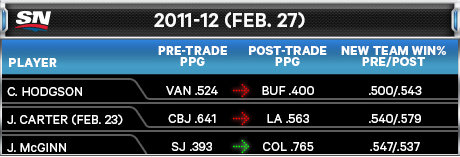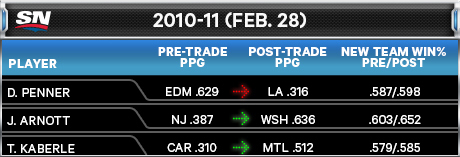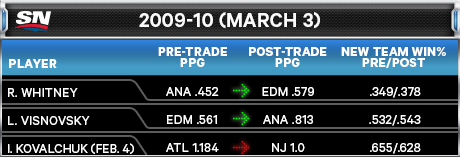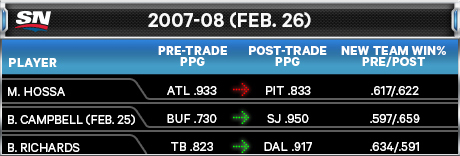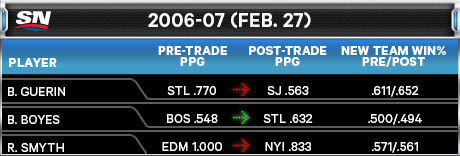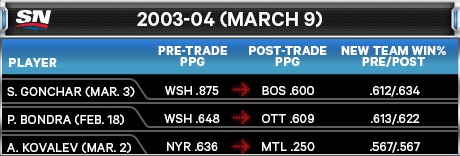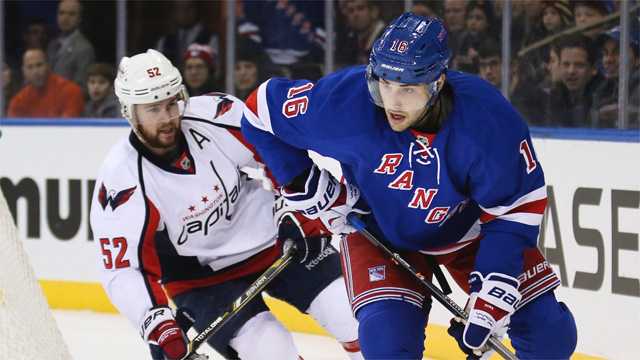The only reason to make a move at the deadline is if you believe it’s going to improve your team down the stretch, so of course that’s what every GM confidently predicts when they announce a trade. Sometimes it works out and everyone looks like a genius, and sometimes not so much.
Brian Campbell started producing points at an even more furious pace with San Jose than he had with Buffalo after being traded in 2007-08, and his new team’s point percentage was just as buoyant; they nearly finished first in the league and made it to the conference semifinals. Other times, a new player’s stock moves in the opposite direction from that of his new team, like Brad Richards heating up with Dallas that same season even while his team seemed to lose the ability to win games.
And for players, all you have to do is look at the points-per-game average of players like Jamie McGinn in 2011-12 (.393 with San Jose, .765 with Colorado), Lubomir Visnovsky in 2009-10 (.561 with Edmonton, .813 with Anaheim) or Erik Cole in 2008-09 (.429 with Edmonton, .882 with Carolina) to see that some guys were just begging for a change of scenery or better linemates. Then again, others like Alex Kovalev in 2003-04 (swan-diving from .636 PPG with the Rangers to .250 with the Habs) or Mark Rechhi (.905 PPG with Pittsburgh and .350 with Carolina) don’t look so happy with their new digs. Buyer’s remorse is a real threat even when you’re talking about the open market for hockey players.

